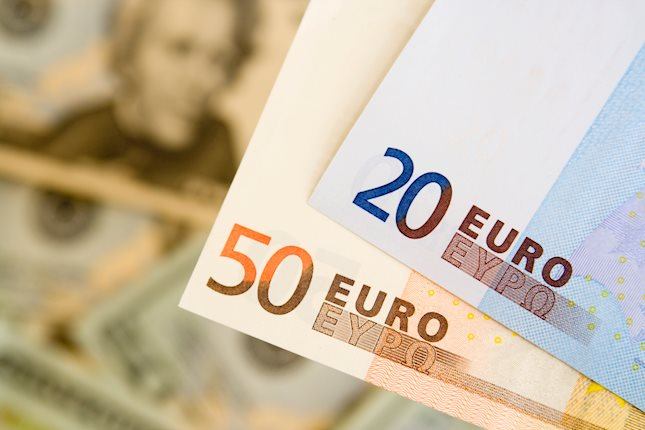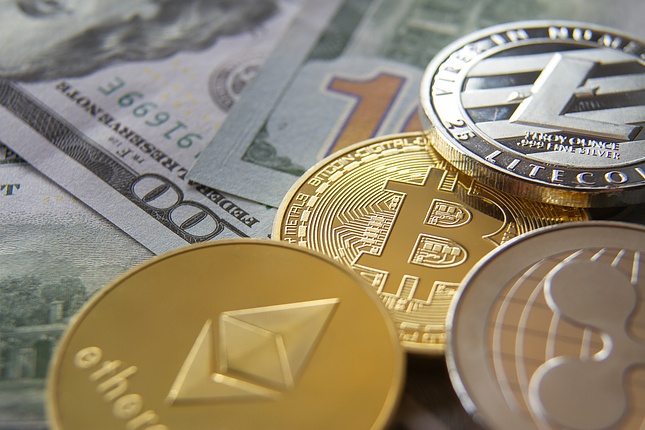Two key central bank meetings take place during a long-overdue return of stock market volatility.
Investors experienced a shock last month with a painful reminder that equity and bond prices can go down as well as up. Stock market bears came out of hibernation and so far, have managed to keep a lid on every attempt to reverse February’s correction. The latest worry is Trump’s push for trade tariffs which, following yesterday’s resignation of Gary Cohn, his chief economic advisor, is certainly not the bluff that some analysts initially suggested.
US inflation picks up
Ahead of this news the market was already selling off on signs that inflation is picking up sharply. US Treasury yields jumped as investors fretted that the Federal Reserve, under its new Chairman Jerome Powell, may be prepared to tighten monetary policy more aggressively than was forecast at the end of last year. This could see the central bank raise rates by 100 basis points in 2018 rather than the 75 basis points predicted in the FOMC’s quarterly Summary of Economic Predictions in December. There’s a feeling that the Fed under Mr Powell is less concerned than his predecessors in keeping a floor under the stock market. Add in concerns over a spiralling US budget deficit and national debt thanks to the Trump administration’s unfunded tax cuts and spending plans, and it’s easy to see why investors are rattled.
Simultaneous tightening?
Another cause for concern is that the Fed (and to a lesser extent the Bank of England) may soon be joined by other major developed world central banks in tightening monetary policy. There has been increased speculation that both the European Central Bank (ECB) and perhaps more surprisingly, the Bank of Japan (BOJ), are closer than ever to withdrawing stimulus. Given that the main driver for stock market returns over the past nine years has been unprecedented and globally coordinated loose monetary policy, it seems that a repricing would be in order as this gets reversed.
ECB and BOJ
Consequently, investors will be paying close attention to the statements and subsequent press conferences following monetary policy meetings from the ECB tomorrow afternoon and the BOJ in the early hours of Friday morning. Even though both Japan and the Euro zone have recently seen their strongest economic growth in more than a decade, no one expects either the ECB or BOJ to make major changes to monetary policy this month. However, that’s not to say that there won’t be some clues about the future pace of monetary tightening from either central bank.
ECB drags feet
Towards the end of last year, the ECB extended its Asset Purchase Programme (APP) from December 2017 to this September, but cut its monthly purchases from €60 billion to €30 billion. While ECB President Mario Draghi insisted that the APP could be extended in size and duration beyond September if necessary, most analysts believe that the stimulus will end in the third quarter of this year. But last week Reuters reported that the ECB was hoping to delay announcing any further reduction in the APP.
Draghi the (lonesome) dove
In the absence of any clear reference in the ECB’s statement, Mr Draghi is bound to quizzed on this in his subsequent press conference. Now Mr Draghi will want to keep his options open – as always. But other members of the Governing Council will be pushing for a normalisation of monetary policy after all these years of extraordinary stimulus. This would be a vote of confidence in the Euro zone project and follows on from news over the weekend that Germany’s Chancellor Merkel finally has a workable coalition government. On the other hand, Italian voters have just shown their dislike of the EU and the euro with the majority backing the two most anti-establishment parties. Furthermore, with no one party holding an overall majority the country now faces months of negotiations to form a workable coalition. Given the parlous state of Italy’s banking sector, this could be problematic. On top of this, any additional move to wind down the APP ahead of September can only put upside pressure on the euro – something the ECB and most of the EU are desperate to avoid.
Kuroda flip-flop
Meanwhile, at the end of last week BOJ Governor Haruhiko Kuroda announced that the central bank would begin planning an exit from its monetary stimulus programme around April next year. He went on to say there could be a policy change before the BOJ’s 2% inflation target was reached. The announcement was unexpected, particularly as Mr Kuroda has refrained from any prior comments concerning monetary tightening, and led to a sharp sell-off in the Nikkei and a corresponding rally in the yen. It was almost as if Mr Kuroda was sending up a trial balloon to gauge market reaction to monetary tightening ahead of this week’s meeting. But yesterday he backed away from/clarified his statement saying that while the BOJ may find itself thinking about winding down monetary stimulus next year, that didn’t mean it would be doing it. It’s safe to say that it would be a big surprise should the BOJ sound remotely hawkish after this week’s meeting.
Delay danger
But while it’s easy to think that the path of least resistance for both the ECB and the BOJ is to keep monetary policy unchanged for now, this still presents its own dangers. As with the Federal Reserve, both central banks need to store up ammunition ahead of the next serious downturn in the global economy. This means a lot more than winding down asset purchases. This means pushing up borrowing costs to levels whereby meaningful cuts can be made to counter any recession. But the whole process takes time, and nine years after reaching the nadir of the financial crisis, it looks as if time is one thing we’re short of.
Financial spread trading comes with a high risk of losing money rapidly due to leverage. You should consider whether you can afford to take the high risk of losing your money.
Recommended Content
Editors’ Picks

EUR/USD stays near 1.0400 in thin holiday trading
EUR/USD trades with mild losses near 1.0400 on Tuesday. The expectation that the US Federal Reserve will deliver fewer rate cuts in 2025 provides some support for the US Dollar. Trading volumes are likely to remain low heading into the Christmas break.

GBP/USD struggles to find direction, holds steady near 1.2550
GBP/USD consolidates in a range at around 1.2550 on Tuesday after closing in negative territory on Monday. The US Dollar preserves its strength and makes it difficult for the pair to gain traction as trading conditions thin out on Christmas Eve.

Gold holds above $2,600, bulls non-committed on hawkish Fed outlook
Gold trades in a narrow channel above $2,600 on Tuesday, albeit lacking strong follow-through buying. Geopolitical tensions and trade war fears lend support to the safe-haven XAU/USD, while the Fed’s hawkish shift acts as a tailwind for the USD and caps the precious metal.

IRS says crypto staking should be taxed in response to lawsuit
In a filing on Monday, the US International Revenue Service stated that the rewards gotten from staking cryptocurrencies should be taxed, responding to a lawsuit from couple Joshua and Jessica Jarrett.

2025 outlook: What is next for developed economies and currencies?
As the door closes in 2024, and while the year feels like it has passed in the blink of an eye, a lot has happened. If I had to summarise it all in four words, it would be: ‘a year of surprises’.

Best Forex Brokers with Low Spreads
VERIFIED Low spreads are crucial for reducing trading costs. Explore top Forex brokers offering competitive spreads and high leverage. Compare options for EUR/USD, GBP/USD, USD/JPY, and Gold.